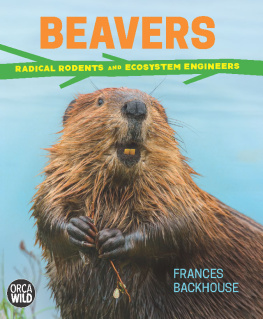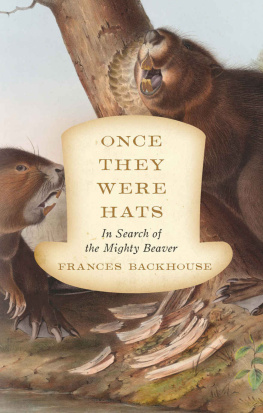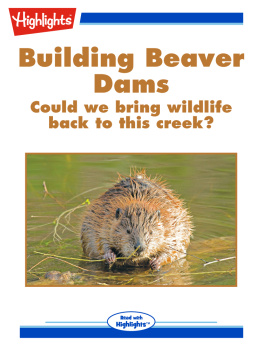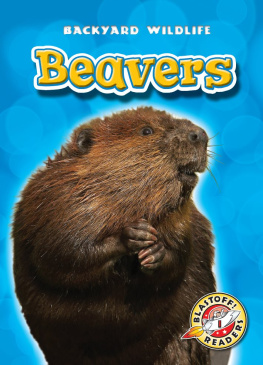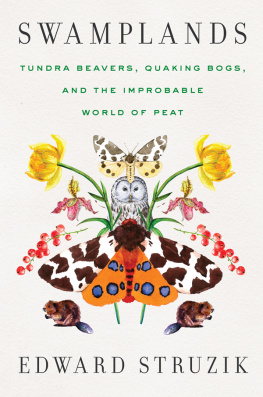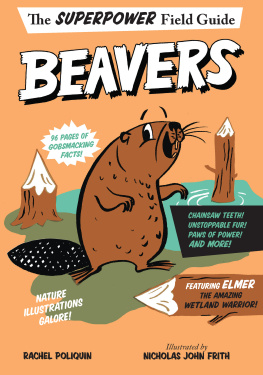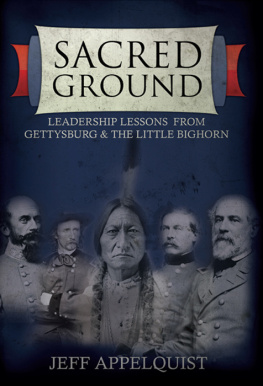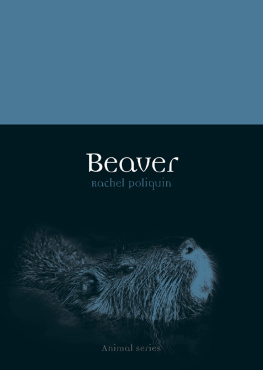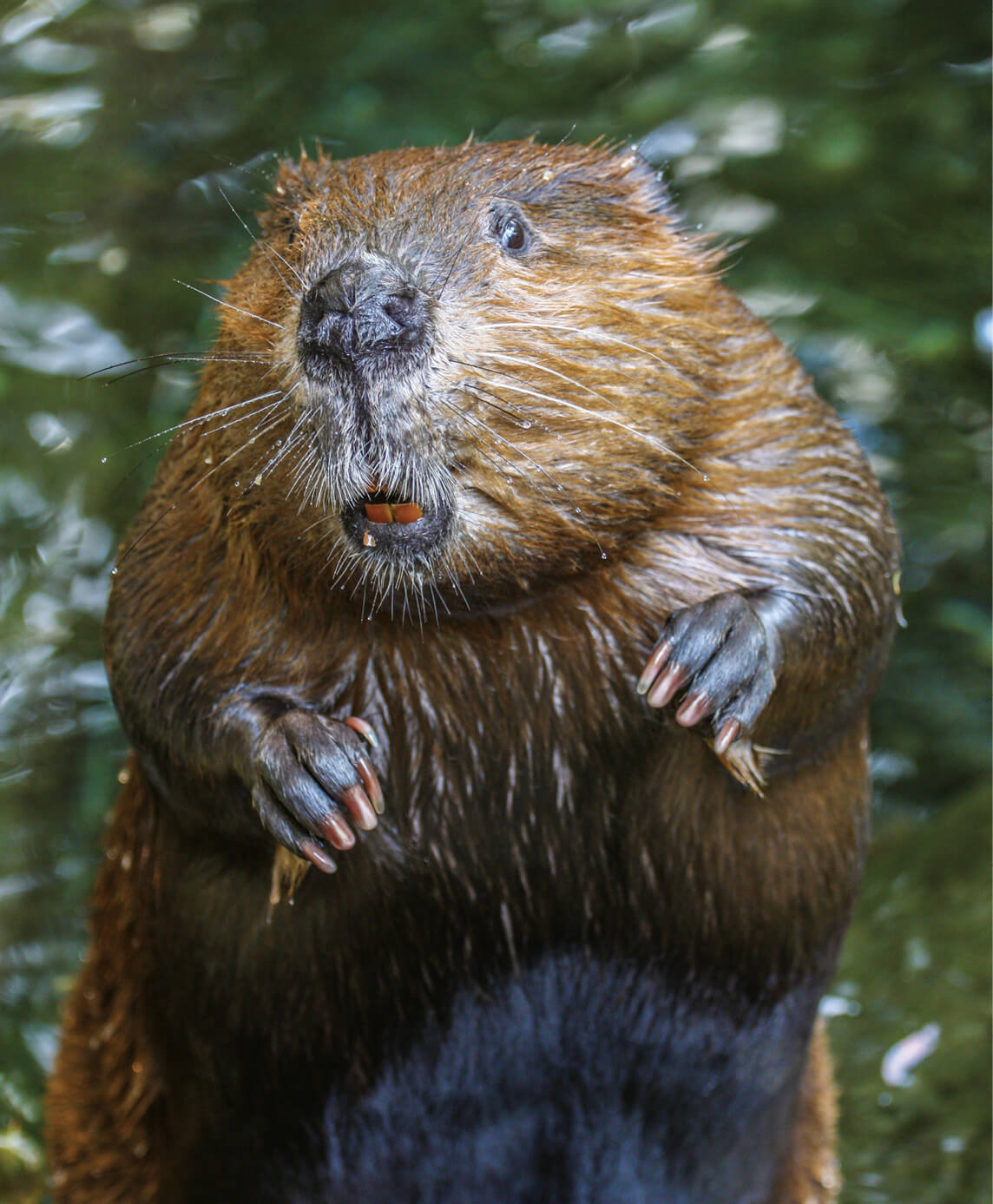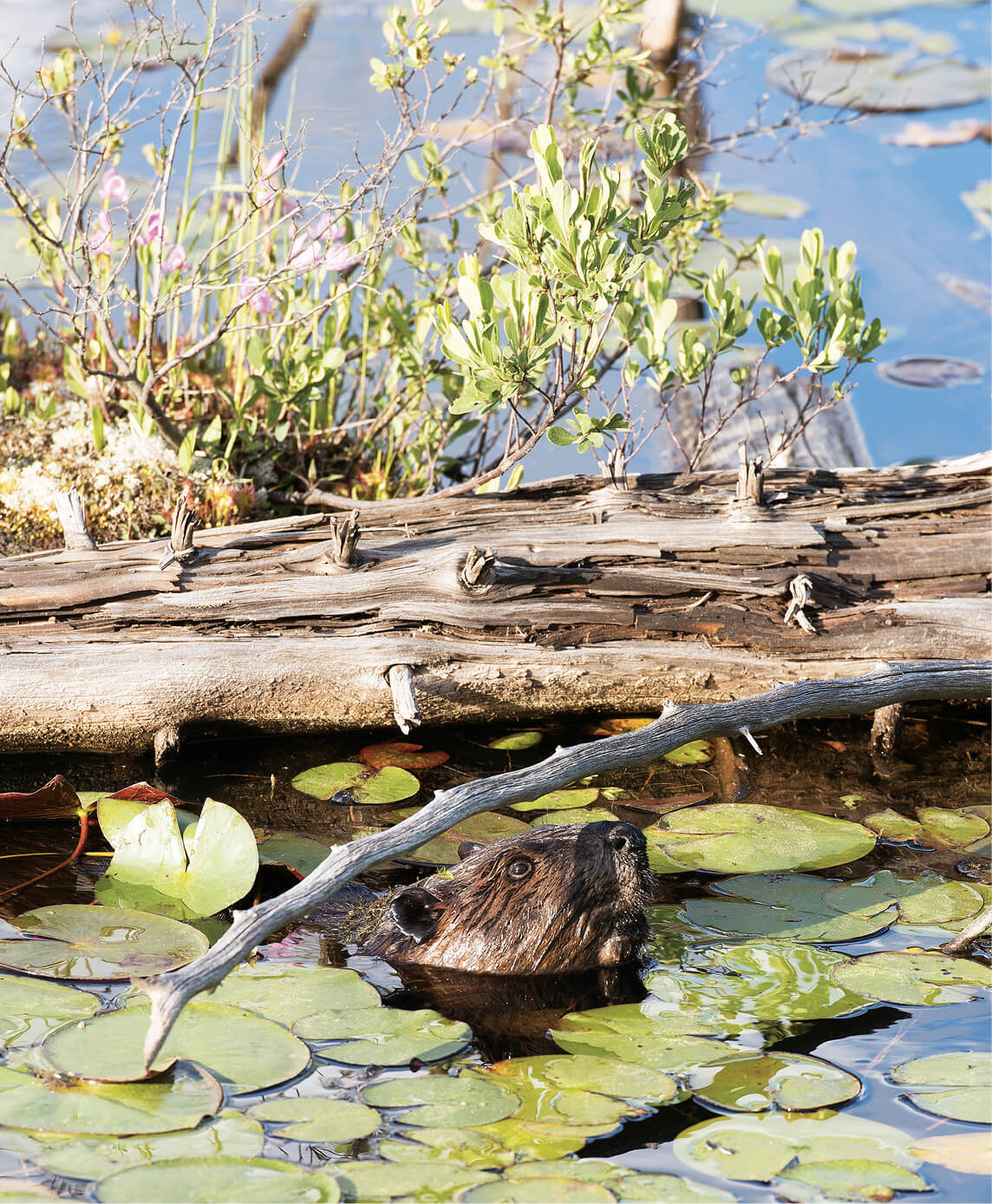Beaverlodges gigantic beaver sculpture is 18 feet (5.5 meters) long and weighs 1,500 pounds (680 kilograms). Thats not including the log it sits on, which doubles the weight. Altogether the sculpture stands 15 feet (4.5 meters) high. SchnepfDesign/Shutterstock.com
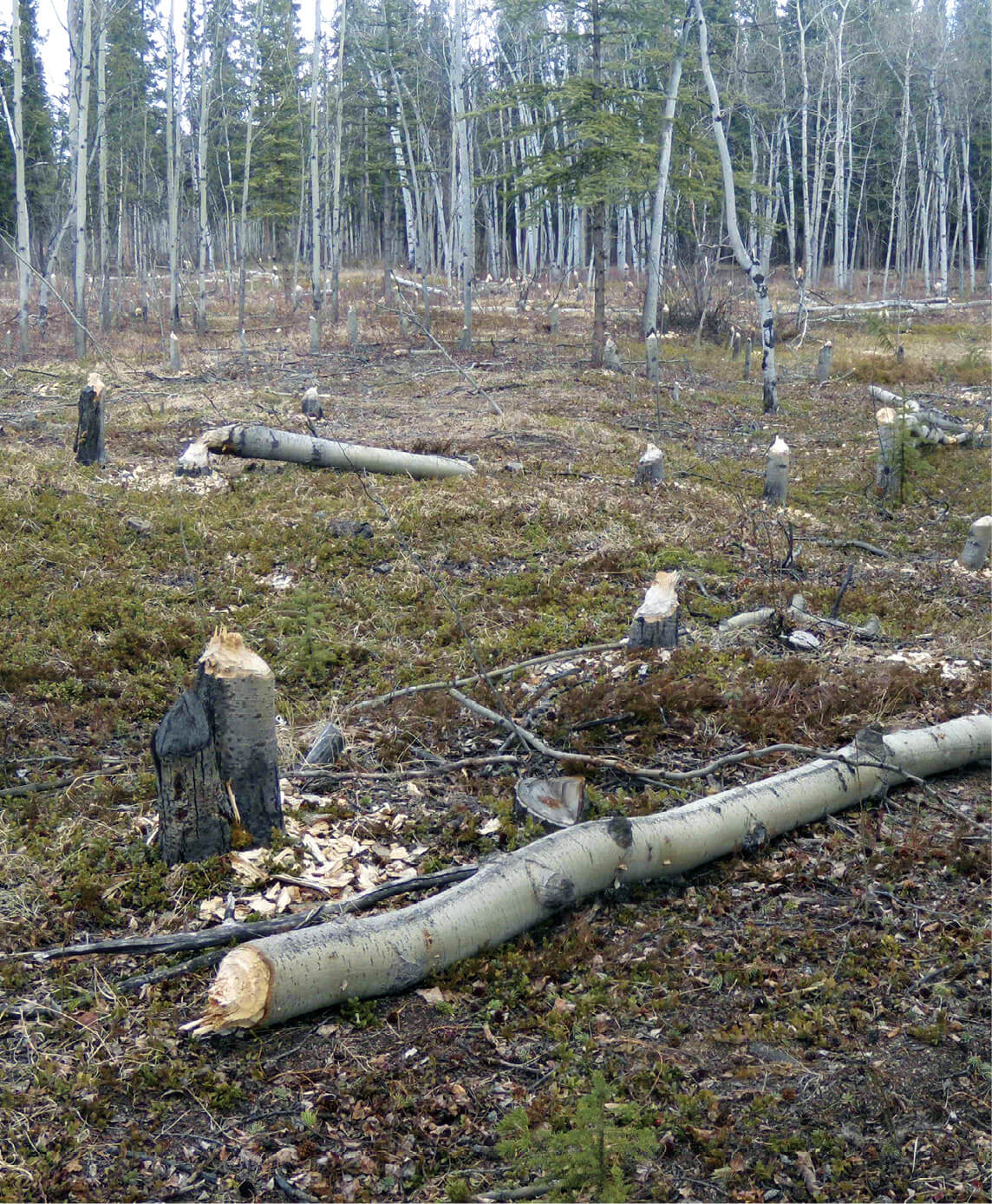
Dozens of pointy white aspen stumps are scattered across this beaver worksite beside the Yukon River. The beavers who felled the trees live in a large bank den nearby. Frances Backhouse
Glossary
Arctic tundrathe area north of the Arctic Circle where its too cold and dry for trees to grow
bank dena beaver burrow dug into the bank of a river or lake
beaver dam analog (BDA)a human-built structure that spans a stream channel and mimics or reinforces a natural beaver dam
beaver meadowa wet, grassy area on the site of a former beaver pond that has either filled with sediment or drained due to lack of dam maintenance
cambiumthe soft, nutritious layer of bark found between the hard inner wood and tough outer bark of a tree or shrub
canala waterway constructed by beavers or humans
castoreuma yellowish-brown substance used by beavers for scent-marking that is produced and stored in the castor sacs, which are tucked inside the beavers body at the base of the tail
castoridsmembers of the beaver family (Castoridae)castorid is the formal, scientific way of saying beaver
cellulosethe main material in the cell walls of plants. It is used to make paper, cellophane and other products.
citizen sciencescientific research done by nonscientists, often working as partners with professional scientists
clinometera measuring tool used to determine slopes, heights and angles of landscape features, trees or other large objects while standing in one place
colonymembers of a beaver family who share the same territory. Usually a colony consists of one pair of adults living with their kits and juvenile offspring.
culverta pipe that runs under a road or railway track and is open at both ends so water can flow through it
DNAcoded molecules found in every cell of every living thing to provide instructions for development, growth and reproduction. DNA stands for deoxyribonucleic acid.
ecosystema community of living things, along with the nonliving parts of their environment (such as water, soil and rocks), all linked together through nutrient cycles and energy flows
ecosystemengineera keystone species that influences its ecosystem by significantly changing its environment
foodcachefood hidden in a secure storage place. A beaver food cache is a pile of leafy branches collected by beavers and anchored to the bottom of their pond near their lodge to provide food during winter.
groundwaterwater in underground spaces within the soil and in the cracks in rocks. It comes from rain and melted snow soaking into the earth.
habitatthe place where a plant or animal makes its home and can get all the things it needs to survive, such as food, water and shelter
incisorsteeth located at the front of the mouth and designed for cutting and gnawing
keystonespeciesan animal or plant that has a very large influence on the health and functioning of its ecosystem. There are several kinds of keystone species, including ecosystem engineers and keystone predators.
lodgethe homes of beavers. A freestanding lodge is completely surrounded by water, and a bank lodge is built into the bank of a river or lake and is only partly bordered by water.
nocturnalactive at night
nutrientssubstances that animals and plants require to live and grow
planktonmicroscopic plants and animals that live in fresh or salt water
reintroductiona conservation activity that returns members of an animal or plant species to places where that species used to live
semi-aquaticliving partly on land and partly in water
speciesa group of closely related organisms that have similar characteristics and can breed to produce offspring
subspeciesa subgroup within a species. Different subspecies within a species usually live apart from each other.
trace fossilthe preserved evidence of something an ancient organism left behind, such as a footprint, burrow or imprint. It differs from a regular fossil, which is the preserved evidence of the organism itself.
tubersthick, underground stems that send up new shoots. Only certain plants, such as water lilies and potatoes, have tubers.
water tablethe underground area where all the cracks in rocks and spaces between soil particles are filled with water
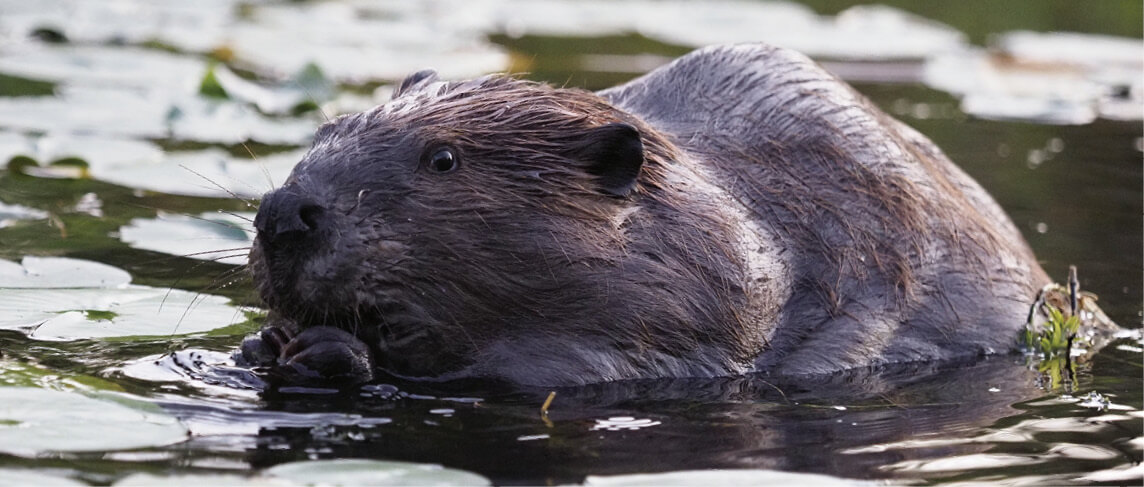
Jennifer Vanderhoof
Resources
Print
Collier, Eric. Three Against the Wilderness. Victoria, BC: TouchWood Editions, 2007.
Ryden, Hope. Lily Pond: Four Years with a Family of Beavers. New York, NY: William Morrow & Co, 1989.
Tournay, Audrey. Beaver Tales: Audrey Tournay and the Aspen Valley Beavers. Erin, ON: Boston Mills Press, 2003.
Video
Beaver: Back to the Future. A short documentary about how reintroducing beavers helps dry regions cope with climate change. /vimeo.com/140201129
The Beaver People. A silent movie featuring Grey Owl and Anahareo and their beavers. nfb.ca/film/beaver_people
The Unknown Heroes of the Methow Valley. A short documentary about the Methow Beaver Project, made by Methow Valley high school student Koharu Yonebayashi. kunoichiproduction.com/films
Film
Beavers. A 1988 documentary originally filmed for IMAX.
Leave It to Beavers. A 2014 PBS documentary.
The Beaver Believers. An award-winning 2018 documentary.
The Beaver Whisperers. A 2013 CBC The Nature of Things documentary.
Online
Association for the Protection of Fur-Bearing Animals (The Fur-Bearers): thefurbearers.com/campaigns/living-wildlife/solutions/beavers
Beaver Deceivers: beaverdeceivers.com
Beaver Institute: beaverinstitute.org
Beaver Solutions: beaversolutions.com
Beavers Northwest: beaversnw.org
Beavers: Wetlands & Wildlife: beaversww.org

